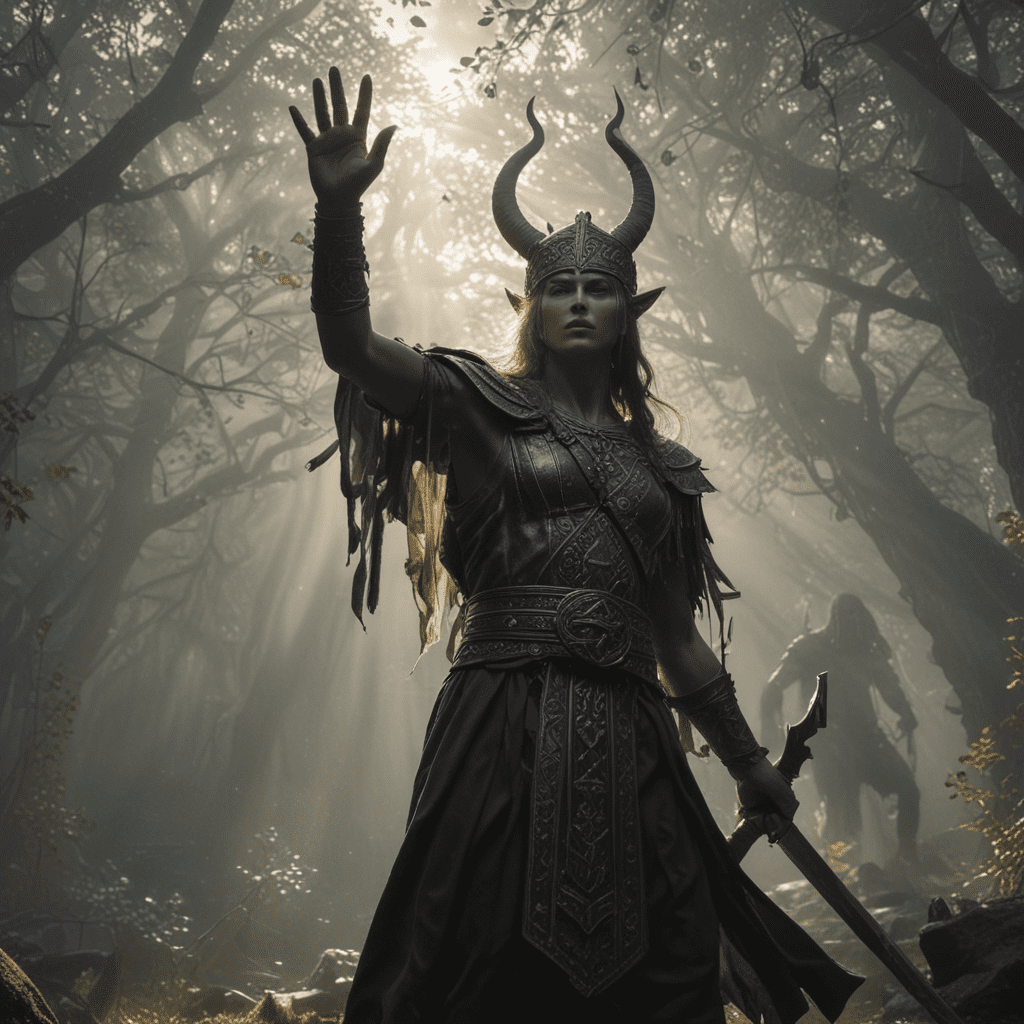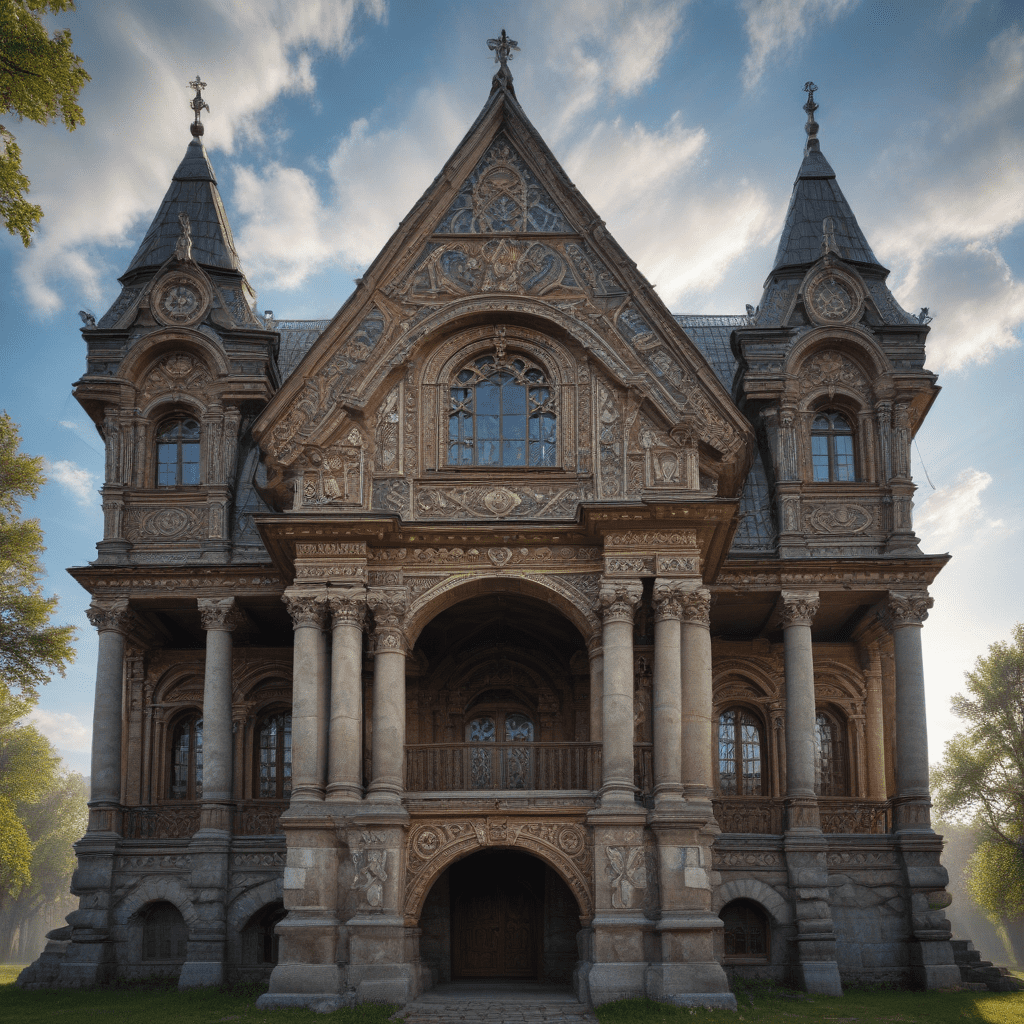The Symbolism of Shadows in Slavic Mythology
Shadows have held immense significance in Slavic mythology, carrying diverse meanings and representations throughout the region's folklore, beliefs, and cultural practices. Embodying a wide spectrum of concepts, from the enigmatic to the malevolent, shadows have played a pivotal role in Slavic mythology, shaping the very fabric of its stories, rituals, and worldview.
1. Introduction
Shadows in Slavic mythology encompass a complex and multifaceted symbolism, occupying a pivotal position in the beliefs and practices of the Slavic peoples. Their elusive nature and uncanny ability to both conceal and reveal have rendered them potent symbols, imbued with a profound aura of mystery and power.
2. Shadows as Entities
In Slavic mythology, shadows are often perceived as distinct entities, possessing their own agency and characteristics. One of the most prevalent manifestations of shadows is the doppelgänger, a double or counterpart of a living person, often regarded as a harbinger of misfortune or even death.
3. Shadows as Metaphors
Beyond their existence as entities, shadows also serve as potent metaphors in Slavic mythology. They embody the unknown, the lurking dangers that may lie hidden in the unseen realms. Shadows can also symbolize sin and evil, representing the darker aspects of human nature.
4. Shadows in Rituals and Ceremonies
The symbolic power of shadows extends into the realm of Slavic rituals and ceremonies. Shadow casting in divination practices was widely employed to gain insight into the future or uncover hidden truths. Conversely, protection from shadows was sought through various rituals and amulets, designed to ward off their malevolent influence.
5. Shadows in Slavic Folklore
Shadows are deeply ingrained in the fabric of Slavic folklore, shaping its tales and legends. Shadow creatures, such as vampires and werewolves, occupy a prominent place in Slavic mythology, embodying the fears and anxieties of the people. Shadowy places, like forests and caves, are often depicted as gateways to the supernatural, harboring hidden dangers and secrets.
6. Shadows in Slavic Literature
Shadows occupy a central place in Slavic literature, serving as powerful storytelling devices. In epic poems and legends, shadows may represent the hidden motivations of characters or foreshadow impending events. Fairy tales often feature shadow archetypes, embodying the protagonist's inner struggles or the challenges they must overcome.
7. Shadows in Slavic Art
Shadow imagery has found expression in various forms of Slavic art. Traditional embroidery and weaving often incorporate shadow motifs, symbolizing protection and connection to the ancestors. Shadow puppets and theater, particularly popular in rural areas, offer a captivating medium for storytelling and ritual performances.
8. Shadows in Slavic Religion
Slavic religious beliefs and practices are deeply intertwined with the symbolism of shadows. Animism, the belief in spirits inhabiting all things, extends to shadows, which are often perceived as protective entities. Shadow worship and shadow cults have existed throughout Slavic history, with rituals and sacrifices performed to honor and appease these enigmatic beings.
9. Shadows in Slavic Ethnology
Shadows continue to play a significant role in the ethnology of Slavic communities. Shadow beliefs are prevalent in rural areas, where taboos and superstitions surrounding shadows shape daily life. Shadow folklore and oral traditions provide valuable insights into the interplay between shadows and the human psyche.
10. Conclusion
The symbolism of shadows in Slavic mythology is a vast and intricate tapestry, reflecting the Slavic peoples' deep connection to the natural world and their profound understanding of the human condition. Shadows embody the unknown, the hidden, and the supernatural, constantly reminding us of the liminal spaces that exist between the visible and the unseen. Understanding the multifaceted symbolism of shadows in Slavic mythology offers a glimpse into the rich cultural heritage and imaginative landscape of the Slavic people.
FAQ
1. What is the most common manifestation of shadows in Slavic mythology?
The most prevalent manifestation of shadows in Slavic mythology is the doppelgänger, a double or counterpart of a living person, often regarded as a harbinger of misfortune or even death.
2. How were shadows used in Slavic rituals and ceremonies?
Shadow casting in divination practices was widely employed to gain insight into the future or uncover hidden truths. Conversely, protection from shadows was sought through various rituals and amulets, designed to ward off their malevolent influence.
3. Name some shadow creatures prominent in Slavic mythology.
Prominent shadow creatures in Slavic mythology include vampires, werewolves, and rusalki (water spirits). These creatures often embody the fears and anxieties of the people.
4. How are shadows represented in Slavic literature?
In Slavic literature, shadows may represent the hidden motivations of characters, foreshadow impending events, or embody the protagonist's inner struggles. Fairy tales often feature shadow archetypes, representing the challenges the protagonist must overcome.



